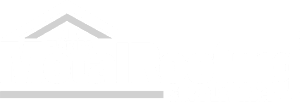Building Codes for Metal Roofing in Florida: What You Need to Know
Florida's diverse climate, ranging from sunny beaches to hurricane-prone areas, necessitates specific building codes, especially when it comes to roofing. As a homeowner, contractor, or developer in Florida, understanding these codes is essential when installing or replacing a metal roof. This comprehensive guide will walk you through the key aspects of Florida's building codes for metal roofing, ensuring your roofing project complies with state regulations and stands up to the unique environmental challenges of the Sunshine State.
Understanding Florida's Building Code
The Florida Building Code (FBC) is a set of standards designed to ensure that buildings in the state can withstand its unique weather conditions, including high winds and heavy rain. Updated regularly, the FBC is considered one of the strictest in the nation, primarily due to Florida’s vulnerability to hurricanes.
Wind Resistance Requirements
One of the critical aspects of the FBC is the emphasis on wind resistance. Florida often faces high wind conditions due to hurricanes and tropical storms. Therefore, metal roofing systems in Florida must be tested for wind uplift resistance and installed according to the manufacturer's guidelines to meet these stringent requirements. The codes specify different requirements for various regions, with coastal areas having the strictest standards due to the higher risk of strong winds.
Corrosion Resistance
Florida's coastal areas also pose a challenge with salt-laden air, which can accelerate corrosion. The FBC requires that metal roofing materials used in these areas be corrosion-resistant. This often means using materials like aluminum, zinc-coated steel, or stainless steel, and ensuring proper coatings are applied to prevent rust and corrosion over time.
Installation Standards
Proper installation is crucial for the performance of a metal roof, especially in a high-stress environment like Florida. The FBC outlines specific installation methods and materials that must be used to ensure the roof’s integrity. This includes requirements for underlayment, fasteners, and sealants. It's vital to work with a knowledgeable contractor who is familiar with these requirements to ensure your roof is installed correctly.
Energy Efficiency
Florida's climate also calls for energy efficiency in building materials. Metal roofs are known for their reflective properties, which can significantly reduce cooling costs. The FBC encourages the use of energy-efficient roofing materials and may include requirements for reflectivity and emissivity, especially in urban areas where heat islands are a concern.
Product Approval and Documentation
All roofing materials used in Florida must have a Florida Product Approval Number or a Miami-Dade Notice of Acceptance (NOA) if used in Miami-Dade or Broward counties. This ensures that the materials have been tested and approved for use in the state's challenging environment. Always check for this approval before purchasing materials, and ensure that your contractor is aware of this requirement.
Regular Inspections and Maintenance
After installation, regular inspections and maintenance are key to ensuring your metal roof remains up to code. The FBC may require periodic inspections, especially after major weather events. A well-maintained metal roof can last decades, but neglecting maintenance can lead to issues that may not comply with state codes.
Navigating Local Amendments
While the FBC provides a baseline, individual counties or municipalities in Florida may have additional requirements or amendments to the state code. Always check with your local building department to ensure compliance with these local regulations.
The Importance of Working with Professionals
Given the complexity of Florida's building codes, it’s crucial to work with roofing professionals who are well-versed in these regulations. A licensed, experienced contractor will ensure that your metal roof is installed to meet or exceed these stringent standards.
Conclusion
Installing a metal roof in Florida offers numerous benefits, including durability, energy efficiency, and aesthetic appeal. However, navigating the state's building codes is crucial to ensure your roof is legally compliant and capable of withstanding Florida's unique environmental challenges. By understanding these requirements and working with qualified professionals, you can ensure your metal roofing project is successful and sustainable.

